Let's suppose we use this simple graph model:
@NodeEntity
class Ad {
// GraphId and more Ad attributes...
@Relationship(type = "HAS_ADVERTISER", direction = Relationship.OUTGOING)
private User advertiser;
@Relationship(type = "IS_FAVOURITE_TO", direction = Relationship.OUTGOING)
private Set<User> favourites = new HashSet<>();
// Getters and setters
}
EDIT: Following the advises of one of the aswers, I've tried adding the incoming relationships to User entity, but the problem still remains.
@NodeEntity
class User {
// User attributes. No incoming relationships for HAS_ADVERTISER neither IS_FAVOURITE_TO...
// EDIT: Added incoming relationships to User entity, but the problem still remains. Tried annotating getters/setters, but neither works
@Relationship(type = "HAS_ADVERTISER", direction = Relationship.INCOMING)
private Set<Ad> ads = new HashSet<>();
@Relationship(type = "IS_FAVOURITE_TO", direction = Relationship.INCOMING)
private Set<Ad> favourites = new HashSet<>();
@Relationship(direction = Relationship.INCOMING)
public Set<Ad> getAds() {
return ads;
}
@Relationship(direction = Relationship.INCOMING)
public void setAds(Set<Ad> ads) {
this.ads = ads;
}
@Relationship(direction = Relationship.INCOMING)
public Set<Ad> getFavourites() {
return favourites;
}
@Relationship(direction = Relationship.INCOMING)
public void setFavourites(Set<Ad> favourites) {
this.favourites = favourites;
}
}
If I execute a cypher query to retrieve the ads with advertiser and favourites information through neo4j console, it's simply working well:
MATCH (ad:Ad),
(ad)-[has_advertiser:HAS_ADVERTISER]->(advertiser:User),
(ad)-[is_favourite_to: IS_FAVOURITE_TO] -> (favouriteUser:User)
return ad, has_advertiser, advertiser, is_favourite_to, favouriteUser
However, if I execute the query through a neo4jRepository instead:
advertiseruser is persisted correctly.- There are two users in
favouritesset: the advertiser user is always added to the set, which is incorrect because there is noIS_FAVOURITE_TOrelationship with this user.
@Repository
public interface AdRepository extends Neo4jRepository<Ad> {
@Query("MATCH (ad:Ad)," +
"(ad)-[has_advertiser:HAS_ADVERTISER]->(advertiser:User)," +
"(ad)-[is_favourite_to: IS_FAVOURITE_TO] -> (favouriteUser:User)" +
"return ad, has_advertiser, advertiser, " +
"is_favourite_to, favouriteUser ")
List<Ad> findAds();
}
Can I change something in my query or my graph model to avoid this? Maybe a spring-data-neo4j bug?
Versions:
<spring-data-neo4j.version>4.2.0.M1</spring-data-neo4j.version>
<neo4j.ogm.version>2.0.5</neo4j.ogm.version>

